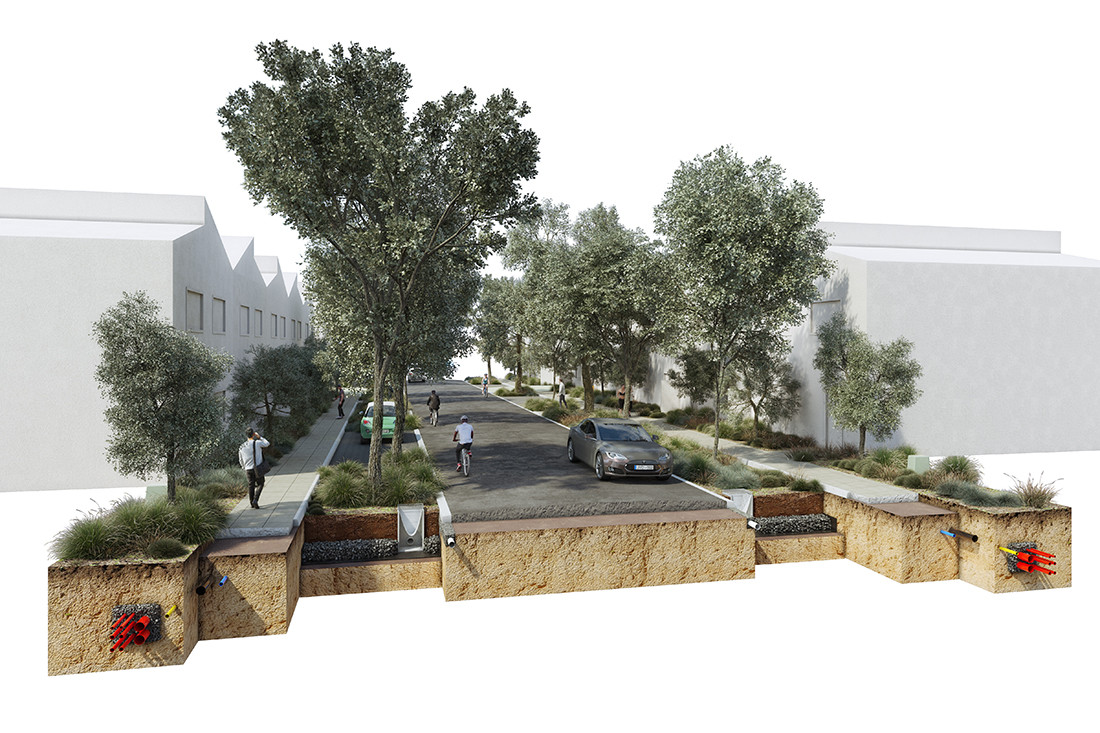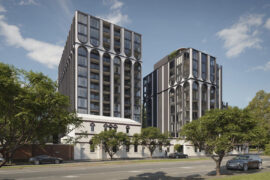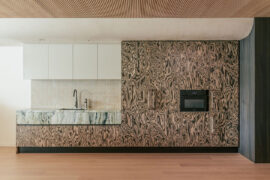In cahoots with Bligh Tanner and Sydney Water, Architectus has explored urban typologies and stormwater management, with a look to shape a sustainable urban environment in Western Parkland City.

November 6th, 2020
Caring for the planet is ultimately caring for ourselves. With a new strategy direction from Architectus, there is a chance to embrace sustainable stormwater initiatives that will benefit Western Sydney, the landscape and the people. The hard work has been accomplished now for implementation!
Looking to the future and helping to shape a new cooler and greener Western Sydney, Architectus, collaborating with Bligh Tanner and in partnership with Sydney Water, has created an urban design solution for a more sustainable environment.
As a renowned Australian architecture and design practice, Architectus has acquired a deep understanding and a variety of perspectives through multiple projects that span the commercial, residential, education, public, transport, interior architecture, urban design and planning sectors. From this vast experience, Architectus was able to bring to the table a valuable contribution and complement the knowledge of their collaborators.

The project know as Urban Typologies and Stormwater Management, focuses on Western Sydney’s Wianamatta South Creek corridor — otherwise known as Western Parkland City — and the strategy developed places the urban microclimate at the forefront of urban planning. Re-assessing traditional ways of working, Architectus, Bligh Tanner and Sydney Water have together conceived an innovative approach to stormwater management and the challenges of urban density, urban greening and sustainable water management.
One of the significant findings of the project was that temperatures can be reduced by up to 4.6 degrees on average by creative streetscape design and stormwater capture in new developments. The proposed typologies provide an evidence-based benchmark for the delivery of best practice sustainability outcomes in Western Sydney and other growth areas over the coming decades to create better and more resilient communities.
Architectus Project Lead Oscar Stanish commented, “We’re looking at something very broad which integrates the stormwater outcomes together with the expansive issues of heat, climate and greening in Western Sydney. It’s really about making sure that we are connecting the dots between a lot of different people, in many different disciplines and that’s really, I think, at the core of what we have brought here with this project.”
Alan Hoban, Project Lead at Bligh Tanner said “This is the first time in Australia that a new city is being designed to deal with the challenges of future climates. The challenge of Western Sydney is to accommodate an additional one million people in an area that can get oppressively hot in summer, and where there are housing affordability pressures, sensitive waterways and key infrastructure constraints.”

The Report’s recommendations are designed for simple and realistic implementation by planning authorities and developers across a broad range of uses, including office, industrial and residential developments. Proposed changes include increasing canopy cover, maximising areas of irrigated vegetation and setting planning controls on the amount of water-resistant surfaces. These changes can contribute to a 75 per cent reduction in stormwater runoff compared to current standards.
Stanish added, “What I really liked about it (the project) was the opportunity to work on climate in general, trying to look at what the end outcomes are going to be for the people who live and work in Western Sydney in the future and, from a whole range of perspectives, that those things can all be delivered.”
The project included many stakeholders and added to the complexity of the research and analysis with input from the Greater Sydney Commission, Western Sydney Planning Partnership and the Department of Planning Industry and Environment to name but a few. All areas of design were integrated into the proposition and the outcomes are a genuine step forward in the quest for a more sustainable environment if and when implementation occurs.
Sydney Water Managing Director, Roch Cheroux said the report showcases the smart planning techniques that will guide development across Western Sydney and other growth communities, reducing the Urban Heat Island Effect through more effective design principles and catchment management.
“The report was commissioned to help influence the design of buildings, open spaces, streetscapes and green corridors to deliver a true Western Parkland City, in what is currently one of the hottest and driest parts of Greater Sydney.
“Furthermore, implementing cooling actions such as permeable surfaces, tree planting, vegetation and irrigation will provide welcome relief to communities in Western Sydney, with modelling showing the number of extreme, very strong and strong heat-stress days per summer, decreases dramatically from 47 to 19 days.”
There is no time to waste in embracing initiatives that can sustain both the planet and our communities. Time is of the essence and with a plan of action such as this it is possible to make a real difference and one that matters on every level.
INDESIGN is on instagram
Follow @indesignlive
A searchable and comprehensive guide for specifying leading products and their suppliers
Keep up to date with the latest and greatest from our industry BFF's!

For a closer look behind the creative process, watch this video interview with Sebastian Nash, where he explores the making of King Living’s textile range – from fibre choices to design intent.

For those who appreciate form as much as function, Gaggenau’s latest induction innovation delivers sculpted precision and effortless flexibility, disappearing seamlessly into the surface when not in use.

MillerKnoll releases the 2025 Better World Report showcasing how design can drive meaningful change through measurable progress across social, environmental and governance initiatives

BLP’s new Sydney Children’s Hospital, Randwick building brings together paediatric care, family-centred design and Australia’s first Children’s Comprehensive Cancer Centre in a major addition to the Randwick Health & Innovation Precinct.

At Melbourne Design Week, Plus Studio brought together planners, designers and local government voices to unpack the realities of urban densification.
The internet never sleeps! Here's the stuff you might have missed

Trust sits at the core of Everton Buildings’ new office, where Ambit Curator was given licence to move beyond convention and deliver a workplace defined by vision, materiality and assured detail.

From the spark of an idea on the page to the launch of new pieces in a showroom is a journey every aspiring industrial and furnishing designer imagines making.